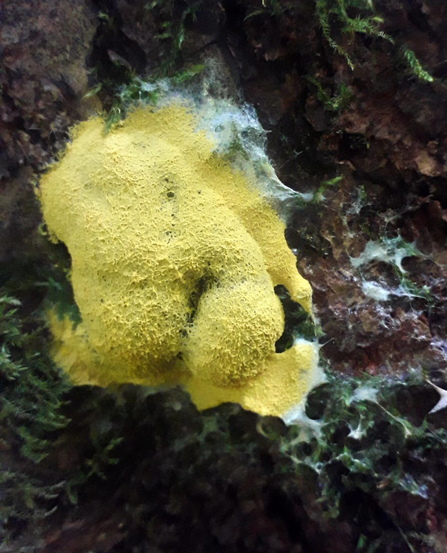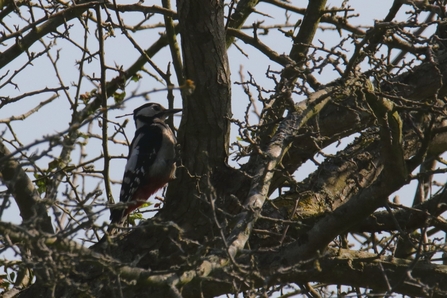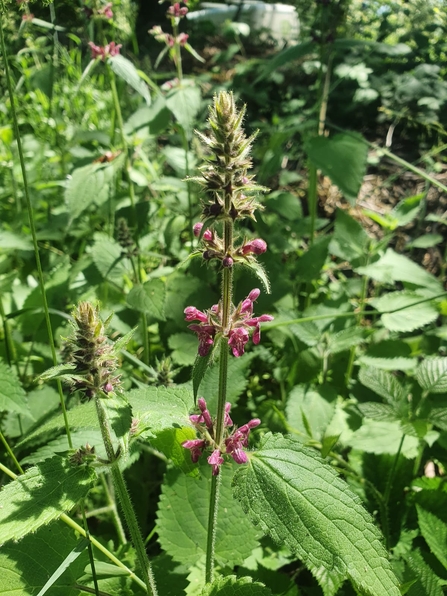Weekly wild news from our reserves - 25 June
Green hairstreak - David Stansfeld
Warden Andy and his team of volunteers have been busy laying a new decking and also moth trapping at Lound Lakes. The long pole on the decking will be used to grow honeysuckle which will benefit pollinating insects.
Trimley Marshes - oasis for birds
If you love birdwatching Trimley Marshes is a must. The site supports an exciting assemblage of wetland birds, as well as birds of prey, and also mammals such as Chinese water deer and hare. There are kestrels currently nesting in the barn on site, and our bird ringer was surprised to find three very new chicks, as they would usually be more developed and ready for ringing at this time of year. This is likely to be a late brood due to the changeable weather this spring.
Dog vomit slime mould
Dogs vomit slime mould, Fugligo septica, also known as scrambled egg mould, prefers shady moist habitats and feeds on mulch, dead wood, leaf litter and untreated wood. It is able to withstand harsh conditions surviving for years waiting until conditions are favourable where it will then produce the sick like fruiting body you see in this photo. Insect egg slime mould, Leocarpus fragilis, also known as egg-shell slime mould is another gross looking species, aptly named due to resembling both insect eggs and then cracked eggs later on when they age and release their spores. Why not search for some of our weirder species this year and see what you can find?

Dogs vomit slime mould – Alex Lack
Hazlewood Marshes – an evolving landscape
After the tidal surge in 2013 flooded the site with salt water, Hazlewood is now a very different place. Whole communities of plants and invertebrates disappeared almost overnight and the birds that depended on them – water rail, bittern – went too. Yet the explosive power of nature gives as well as takes. Majestic spoonbill can now be seen on the reserve during winter along with huge flocks of black-tailed godwits and dunlin. Redshank, lapwing and avocet all nest here and the briny waters ring with many species of duck calls.
Ash dieback has transformed the site further, and as the trees on the margins of the reserve start to rot, there has been an influx of woodpecker activity, like this great spotted woodpecker which was seen hammering and probing for food in the rotting tree branches and stems that are now in the intertidal zone.

Great spotted woodpecker at Hazlewood Marshes – Andrew Excell
Not quite a snake in the grass – the sequel
This week we actually have video footage of a real snake – a young grass snake to be precise. However, it is captured moving through water rather than grass! When fully grown the grass snake is our largest snake, and is particularly fond of wetland habitats, but can also be found in dry grasslands and in gardens, especially those with a pond nearby. During the summer, grass snakes can be spotted basking in the sun near their favourite ponds or swimming in the water. They hunt amphibians, fish, small mammals and birds. Females lay 10 to 40 eggs in rotting vegetation, such as compost heaps, incubating them until they hatch in early Autumn. Like all reptiles, grass snakes hibernate, usually from October to April.
Heathland continuing its return
Sam, our Knettishall Heath Warden, sent in this photograph showing an area at the nature reserve where conservation management has allowed heathland plants a foothold after conifers were planted here in the mid 1900’s. Pioneering species which happily colonise this habitat include foxglove, bracken and silver birch. Our long-term aim is to reconnect three isolated patches of heathland at Knettishall Heath and allow specialist species to move more easily through the landscape. One species likely to benefit is the green hairstreak butterfly spotted by Assistant Warden David.
Hedge woundwort
Growing in woodlands such as Arger Fen & Spouse’s Vale and along hedgerows and roadside verges, hedge woundwort is a common, perhaps unremarkable plant with one defining feature - its unpleasant and astringent smell. This smell is particularly apparent when the plant is crushed. Magenta flowers appear between June and October and are pollinated by bees. Once the seed is dispersed, the plant, which is a member of the mint family, also spreads vigorously using its underground rhizomes (stems). As its name suggests, this wildflower was used as a herbal remedy to staunch bleeding and heal tissue. The London based herbalist John Gerard would use Hedge Woundwort to treat injuries received in pub brawls during the 1600's.

Hedge woundwort at Arger Fen – Joe Bell-Tye
Carlton Marshes panorama
Warden Dan took this dramatic panorama of a humid and stormy afternoon at Carlton.

Panorama at Carlton Marshes - Dan Doughty











